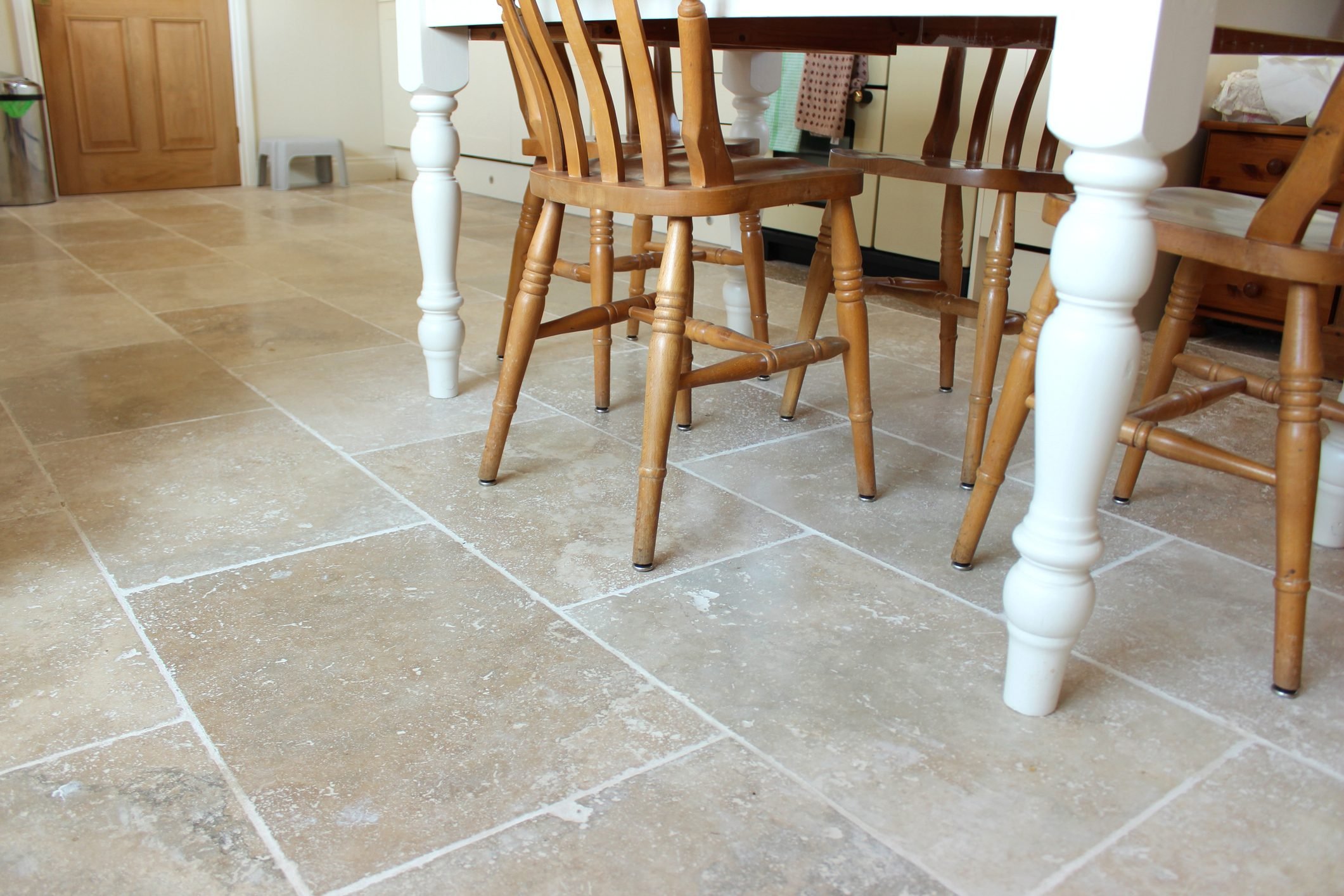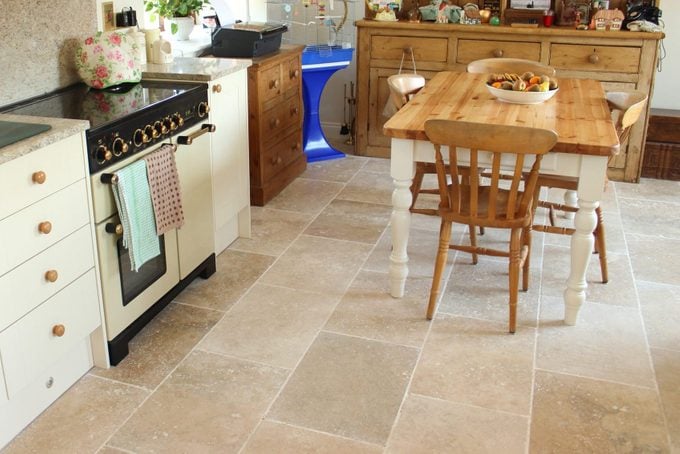Travertine tile is a perennially popular choice for homeowners. Here's what you need to know about travertine tile before you choose it for your home.

Travertine Tile: What To Know

Even if you’ve never thought twice about travertine tile, you’ve probably seen it in residential or commercial properties.
With its range of colors, deluxe look, mid-range price and relative ease of installation and care, travertine is a popular flooring choice for kitchens, bathrooms and other living spaces, as well as commercial interiors. Here’s a look at what travertine tile is and where it comes from, plus how to install and care for it.
On This Page
What Is Travertine Tile?
Although they’re both sedimentary stone, travertine is not a type of marble, nor is it related to granite, a natural igneous rock. Instead, travertine is a natural limestone that forms when hot springs, rivers, lakes and other freshwater bodies evaporate and leave behind calcium-rich mineral deposits.
Travertine is most often associated with Italy, where it’s been a building material for thousands of years. Travertine tile is still sourced from quarries in Italy, as well as Turkey, Iran, Peru and Mexico. Purists say the travertine from Italy offers superior strength and density.
Pros and Cons of Travertine Tile
We asked Paolo Marchetti, a stonemason in Umbria, Italy who works regularly with travertine tile, to list some of its pros and cons.
Pros
- Visual appeal: “Travertine tile creates a stylish look,” says Marchetti, “and can give a similar appearance to marble or granite at a lower cost than those materials.” He adds light-colored travertine tile flooring can make a space look larger.
- Stays cool outdoors: “If you install travertine outside, under full sun, it doesn’t heat up,” says Marchetti. So for a pool surround, there’s no need to hotfoot it across scorching pavement, as you would with pavers or wood decking.
- Easy to work with: “Travertine tile is medium density,” says Marchetti, “which makes it easier to cut without risk of breaking or chipping.” Travertine tile is also versatile. It can be used on floors, walls and stairways. It comes in lots of sizes, from tiny mosaic patterns to 24-in. by 36-in. slabs, or even larger if custom-ordered.
Cons
- Scratches and stains easily: Travertine is porous. If not properly treated, it will absorb oils and other ointments. It can be stained by spilled liquids or even scored by acidic liquids like vinegar. “It also scratches easily,” says Marchetti, “so you need to be careful about moving heavy or sharp objects over it.”
- It’s expensive: While travertine tile is cheaper than marble or granite, it’s still pricier than porcelain and ceramic tile. Although prices vary widely, on average travertine tile costs about $15 per square foot, plus installation. By comparison, ceramic tile may cost as little as $1 per square foot.
- It’s full of holes: Travertine tile surfaces feature irregular veins, bands and holes. While some homeowners may leave them unfilled, most professionals recommend filling them with sanded grout or an epoxy grout made specifically for travertine. (Some travertine tile is sold with the holes already filled.) “Outside,” Marchetti says, “if water gets into the holes and freezes, it will crack the travertine.” And even in a warmer environment like South Florida, mold and algae can form outdoors and make those natural-colored holes and veins turn black. Indoors, Marchetti adds, dirt from routine use will build up in the holes and similarly discolor the tiles.

Installing Travertine Tile
Marchetti says travertine tile can be installed by a competent DIYer, using the same tools as ceramic tile installation — a V-notched trowel and good-quality thin-set mortar. (Marchetti says white mortar is best.) He also recommends buying or renting a wet tile saw. And use tile spacers to keep your lines neat.
For grouting, Marchetti recommends two approaches.
If you bought travertine tile with pre-filled holes, put grout into the joints between the tiles. Then float it, a small area at a time, into the joints with a rubber grout float. Once the grout starts to firm up, wipe down the area with a damp but not dripping tile sponge.
If the tile hasn’t been pre-filled, you’ll have to apply grout and fill the holes in the tile surface at the same time. In that case, says Marchetti, “float the grout over the entire tile surface and the joints and make a few sweeps with the float to push the grout in.”
Once the grout starts to set, pass over it with the sponge in a circular motion, pushing excess grout into holes and joints. Then, with a fresh sponge, clean it diagonally.
Once the installation has set, treat the travertine tile with a natural stone sealer. This will keep liquids from penetrating the travertine without changing the appearance of the stone. Depending on use, you’ll need to repeat this treatment every year or two.
How To Clean Travertine Tile
Routine cleaning of travertine is about the same as any other tile surface. You can buy a floor cleaner made for natural stone, or just use an all-purpose floor cleaner as long as it doesn’t contain any vinegar, bleach, ammonia or corrosive ingredients. You can also steam mop your travertine floors, which helps extract dirt from any remaining holes.
For outside installations, use a pressure cleaner once or twice a year. Just keep it on the low setting so you don’t knock any grout loose.




















